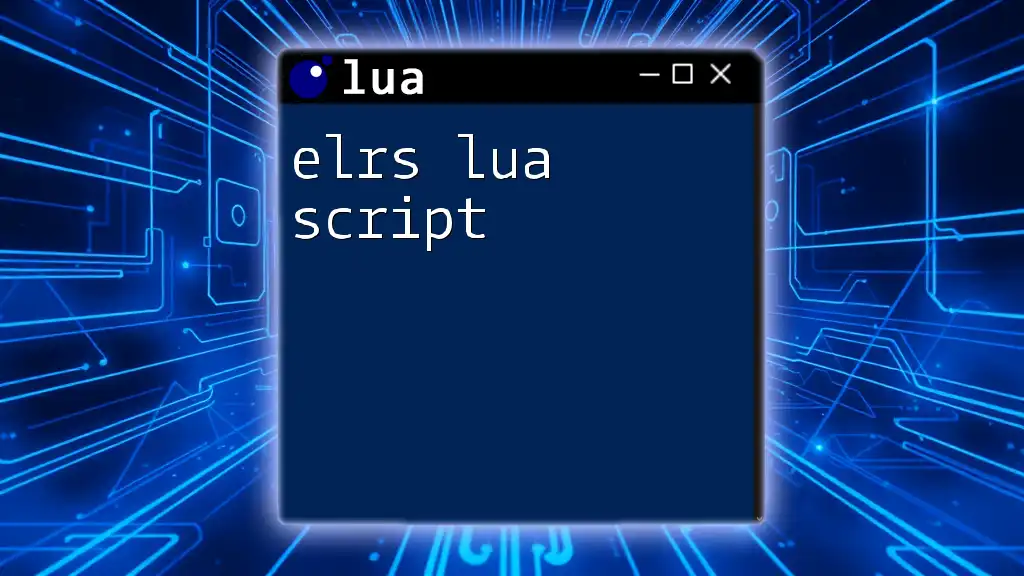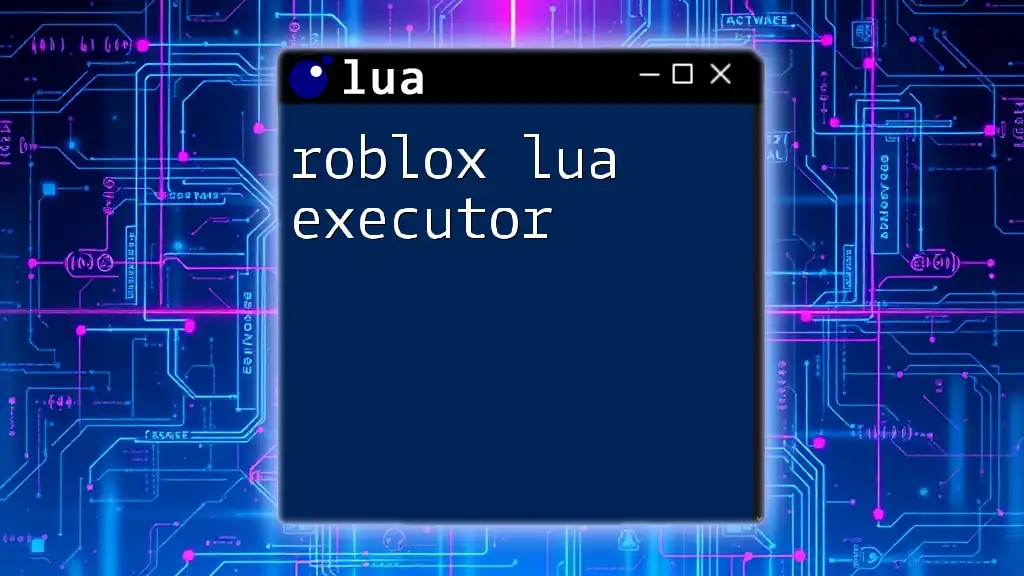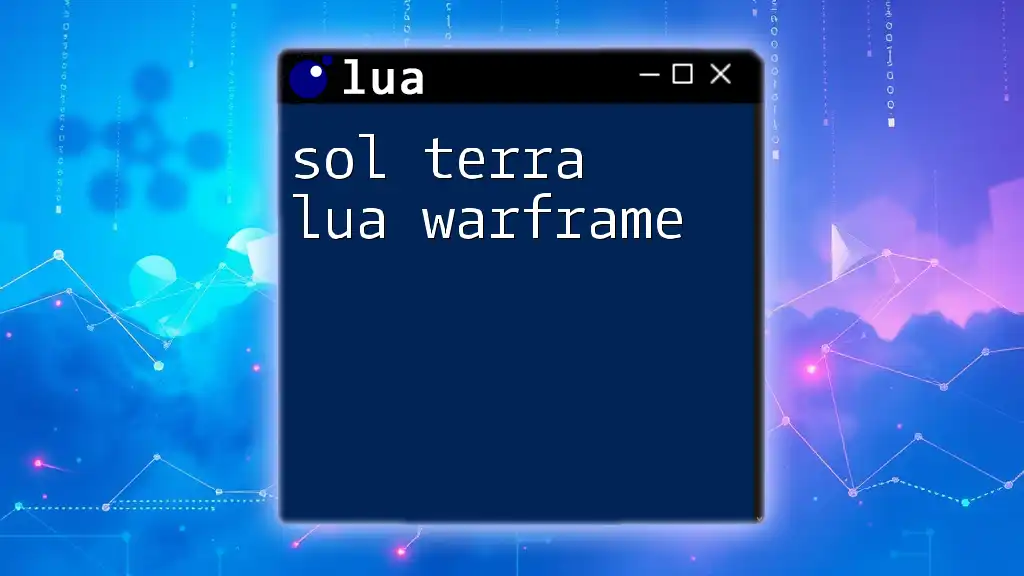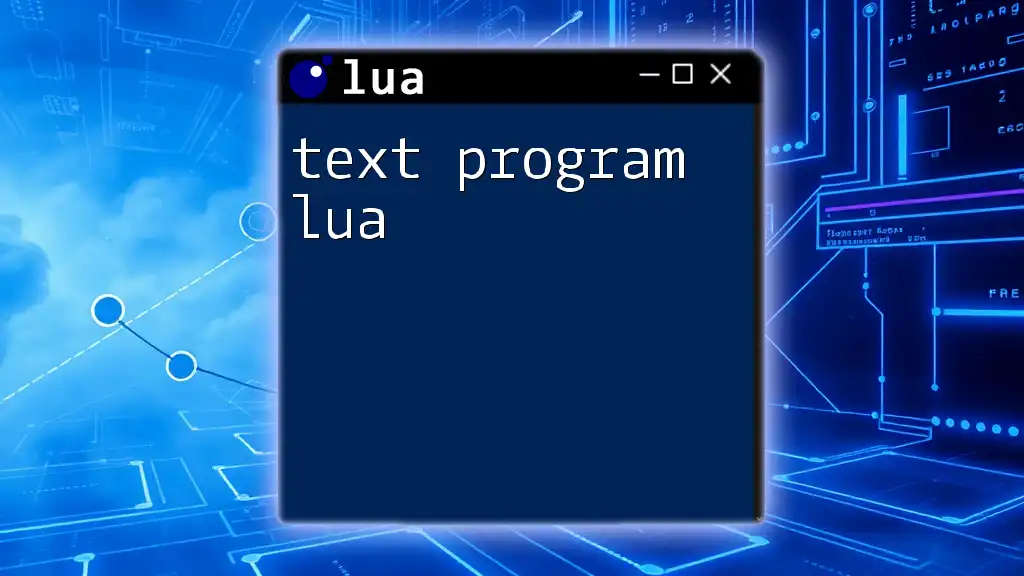In this example, we demonstrate how to configure WezTerm using Lua by setting up a simple key binding to open a new tab.
local wezterm = require 'wezterm';
return {
keys = {
{key="t", mods="CTRL|SHIFT", action=wezterm.action{SpawnTab="CurrentPaneDomain"}},
},
}
What is WezTerm?
Overview of WezTerm
WezTerm is an advanced terminal emulator that merges modern technology with powerful features suited for both novices and experienced developers. Designed with performance in mind, WezTerm supports features such as GPU rendering, Unicode, and tabbed sessions. With a user-friendly interface and a variety of customization options, it stands out among other terminal emulators in the market.
Why Use Lua with WezTerm?
Lua is a lightweight, high-level scripting language that excels in configurability and embeddability. Using Lua within WezTerm allows users to create tailored experiences and automate repetitive tasks. Custom Lua scripts can dramatically enhance your efficiency and streamline your terminal interactions. By utilizing Lua, you gain control over your terminal's appearance, behavior, and functionality.
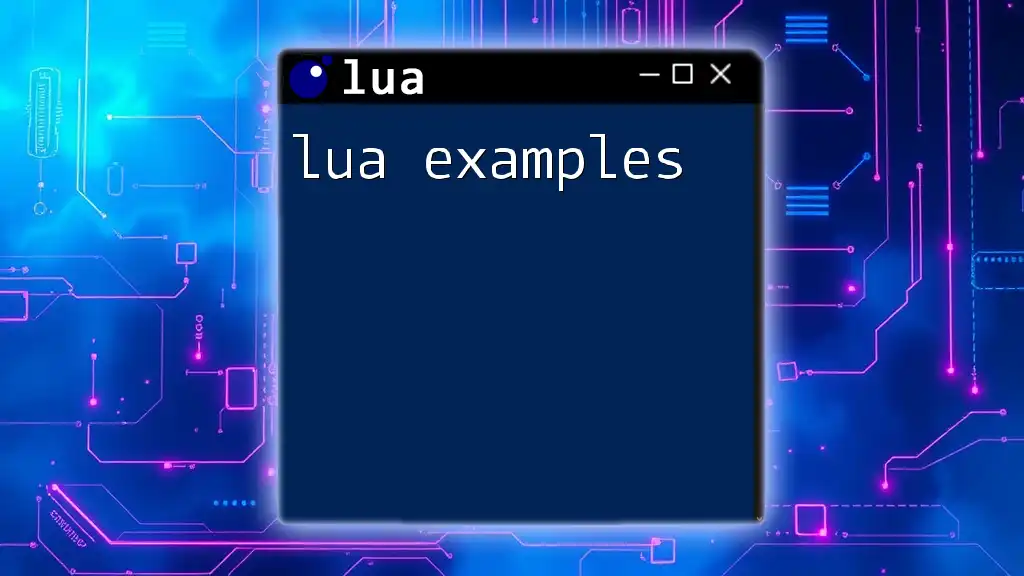
Getting Started with WezTerm and Lua
Installation of WezTerm
To start using WezTerm, installation steps vary slightly depending on your operating system:
- Windows: Download the latest installer from the [WezTerm website](https://wezfurlong.org/wezterm/). Run the executable and follow the prompts.
- macOS: Use Homebrew by executing `brew install --cask wezterm` in the terminal.
- Linux: For systems like Ubuntu, you can download a `.deb` package from the official site, or install using a package manager.
Basic Lua Concepts
Before diving into WezTerm configurations, understanding basic Lua syntax and data types will be beneficial. Lua’s structure is simple, and you'll primarily work with:
- Tables: The primary data structure in Lua, akin to arrays or dictionaries in other languages.
- Strings: Used for text manipulation.
- Numbers: All numbers are treated as floating-point.
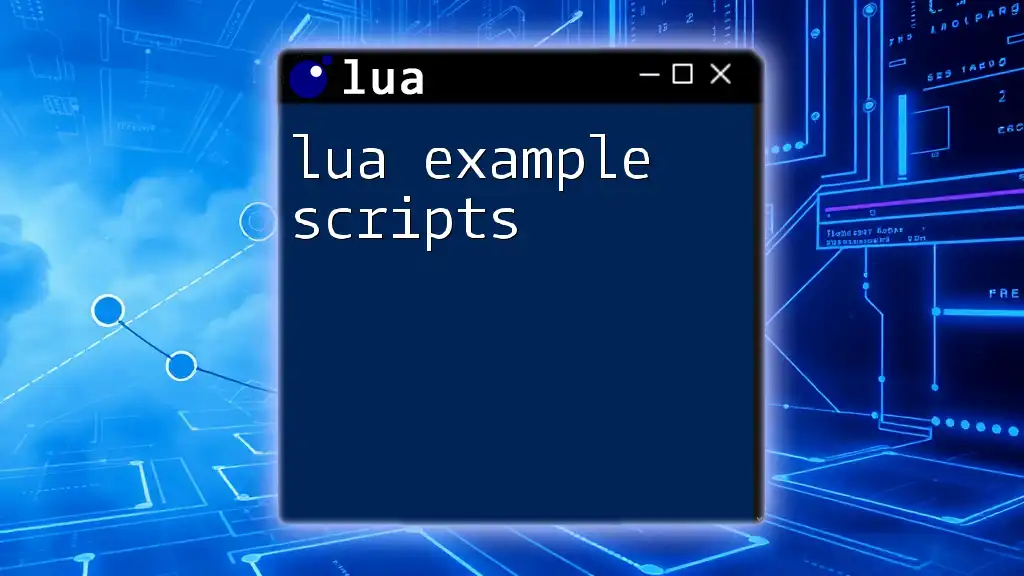
Setting Up Your First WezTerm Configuration
Creating a `wezterm.lua` Configuration File
The configuration file is where all customizations will reside. Typically, the file is located in your home directory under `.config/wezterm/`. If the directory doesn’t exist, create it and create a file named `wezterm.lua`.
Example: Basic Configuration
Here is a straightforward example of a basic configuration:
local wezterm = require 'wezterm'
return {
color_scheme = "Solarized Dark",
font_size = 12.0,
}
In this configuration:
- `local wezterm = require 'wezterm'` loads the WezTerm API.
- `color_scheme` specifies the color palette used in the terminal.
- `font_size` adjusts the size of the font displayed.
By saving this file and restarting WezTerm, you will see a new look immediately.
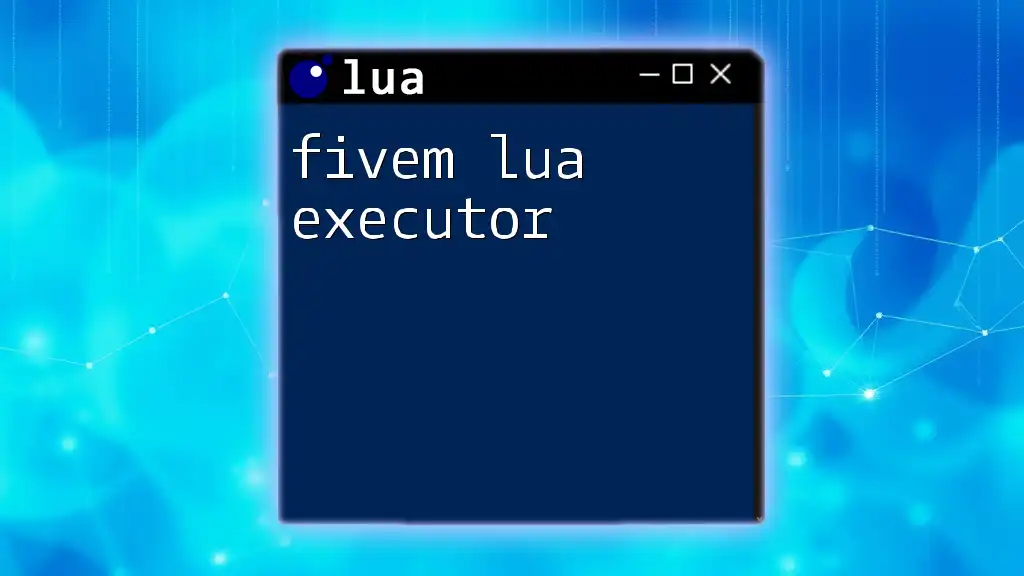
Advanced WezTerm Lua Examples
Customizing Appearance
Changing Font and Colors
To elevate your terminal's aesthetics, you can modify the font and colors. Here’s how:
font = wezterm.font("Fira Code"),
color_scheme = "Dracula",
This snippet sets the terminal font to "Fira Code", a popular font among developers, and changes the color scheme to "Dracula", known for its eye-friendly palette.
Adding Custom Backgrounds
If you wish to personalize your terminal further, you can add a background image:
background = wezterm.pixel(1,1),
This allows you to select custom images, providing a more personalized workspace that could help reduce monotony.
Key Bindings and Shortcuts
Configuring key bindings enables you to optimize your terminal usage. Here’s an example of how to create a custom key binding:
keys = {
{key="t", mods="CTRL", action=wezterm.action{SpawnTab="CurrentPaneDomain"}},
}
In this case, pressing CTRL + t will open a new tab within the same domain. This small adjustment can greatly enhance your workflow by making it easier to manage multiple processes.
Implementing Cross-Session Actions
Cross-session actions are beneficial for multitasking. Here is an example function that toggles full-screen mode:
function toggle_fullscreen(window, pane)
window:perform_action(wezterm.action.ToggleFullScreen, pane)
end
This function can be invoked to conveniently switch to full screen, which is especially useful during presentations or when multi-tasking.

Leveraging WezTerm's Features with Lua
Using APIs to Enhance Productivity
WezTerm exposes a variety of APIs that can significantly improve your workflow. These APIs allow interactions within the terminal, enabling developers to create environments tailored to their specific needs.
Script Integration
One of the robust capabilities of WezTerm is the ability to embed Lua scripts for automation. You can create scripts that handle a sequence of commands, reducing the need to manually input every task. Here’s a generic structure of how to trigger a Lua script within WezTerm:
wezterm.on("trigger_script", function(window, pane)
-- Your automation command here
end)
In this example, you can define actions to trigger based on terminal events, making your setup both versatile and efficient.
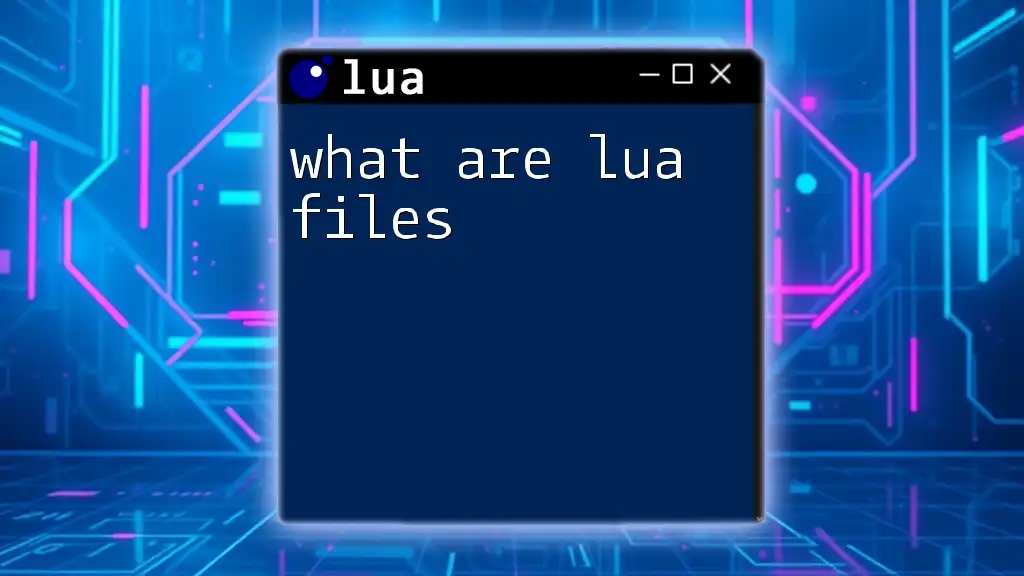
Conclusion
Exploring WezTerm with Lua provides an extensive framework for customization and automation. By utilizing the provided examples and guidelines in this article, you can enhance your terminal experience, making it better suited for your personal or professional development needs. Embrace the power of WezTerm and Lua to tailor your terminal environment exactly to your liking, and don't hesitate to experiment with new configurations!
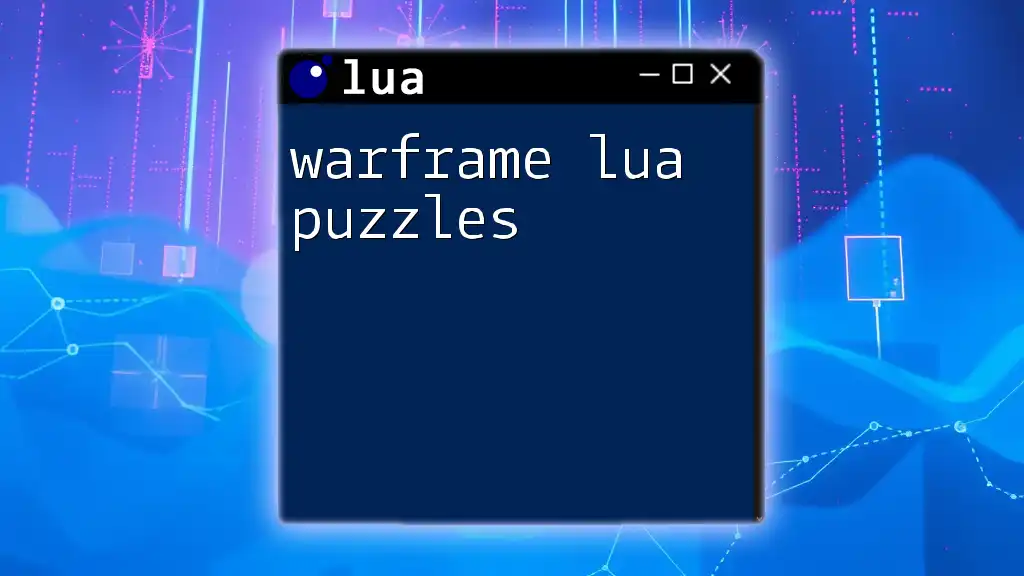
References and Further Reading
To deepen your understanding, visit the [WezTerm documentation](https://wezfurlong.org/wezterm/), which provides extensive resources on the application’s capabilities. Additionally, for Lua enthusiasts, the [official Lua documentation](https://www.lua.org/manual/5.1/) can help you explore more complex scripting techniques. Engaging in community forums will also allow you to share your configurations and learn from other users' experiences.







